Art Fairs
How Does a Gallery Get Into Art Basel?
More than 750 dealers apply for about 225 booths in the fair's main sector. Competition is fierce.
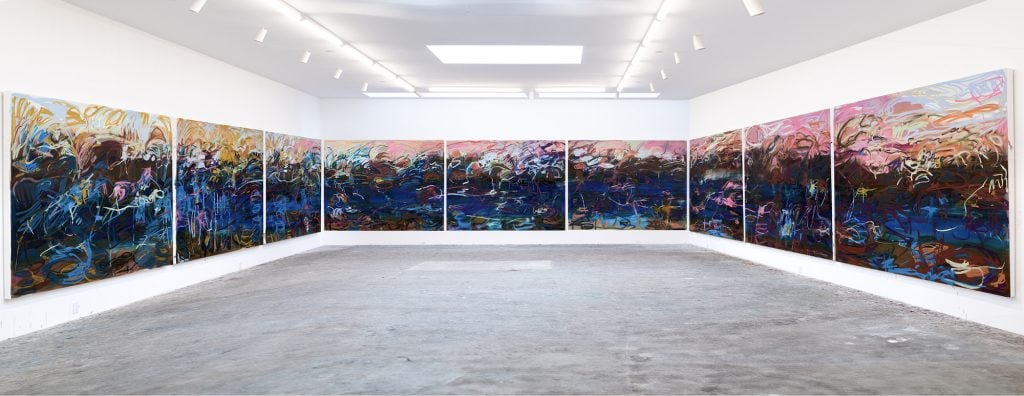
More than 750 dealers apply for about 225 booths in the fair's main sector. Competition is fierce.

Eileen Kinsella

Visiting Art Basel in Switzerland is easy enough. This year, those without complimentary VIP passes will pay CHF 68, or about $76, for a ticket. Exhibiting at the fair as a dealer, though? That is another matter entirely. Some years, the company receives more than 750 applications for the roughly 225 slots in its main “Galleries” sector. Competition is fierce, and an acceptance or a rejection can have a considerable impact on a gallery’s reputation—and its bottom line.
Founded in 1970, Art Basel is widely considered to be the world’s leading contemporary art fair, and its prestige has continued to grow as it has added fairs in Miami Beach, Hong Kong, and Paris. Top artists want their work in Basel, and deepest-pocketed clients want to buy there. “You get in, and you’ve arrived,” New York and Los Angeles dealer James Fuentes said.
What does it take to get in?
Ahead of this year’s event, which opened to VIPs this morning, I put that question to a wide range of power players, including art advisors, ambitious younger dealers, blue-chip established ones, and former members of Art Basel’s powerful selection committee, which vets those applications.
There was unanimous agreement that admission standards are rigorous, the highest of any fair on the global art circuit. There were also gripes about politics, infighting, and personal grudges that allegedly affect selection. (Sometimes, those matters have spilled into public controversy and legal action.)
One U.S. dealer called it “the most political fair” and said committee members “wield their individual biases without consequence. So it feels far too much like high school at times.” (Naturally, some who do business in Basel were not eager to discuss the fair publicly.) However, many exhibitors said that intense competition keeps them on their toes and fuels the fair’s continued premier status.
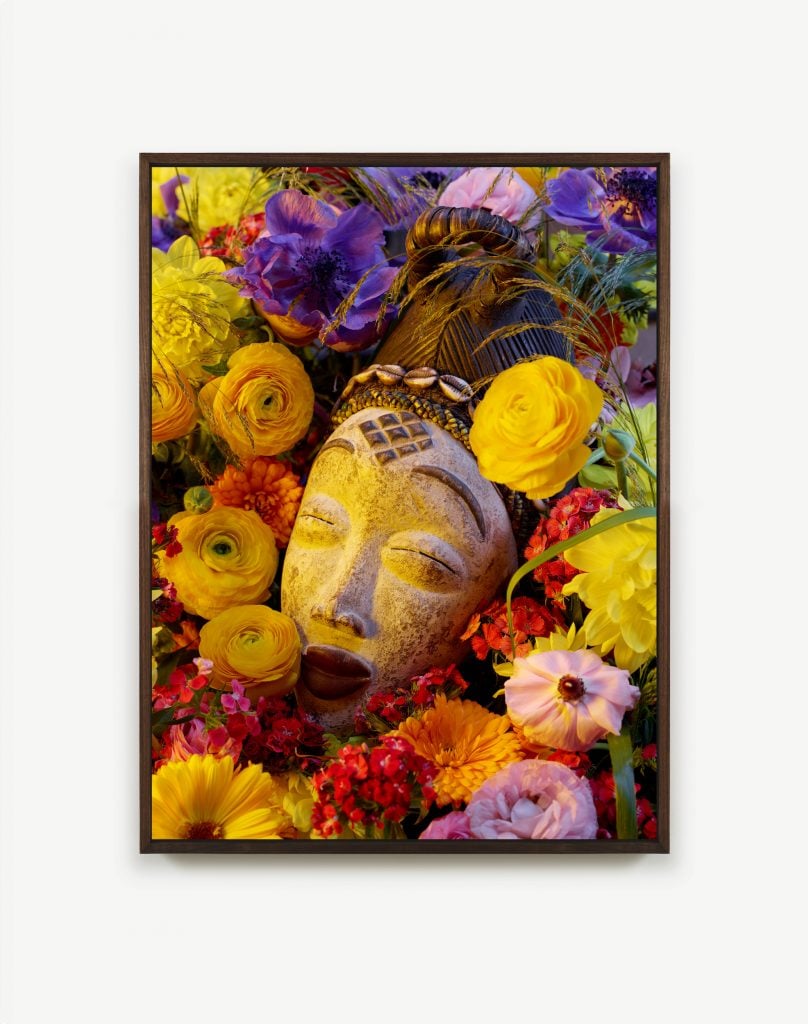
Awol Erizku, Secret Rebirth of Sleeping Dreams (2024). Edition of 3 with 2 APs (#1/3). Image courtesy the artist and Sean Kelly Gallery.
“One does have to keep one’s standards very high to retain one’s position in the fair,” said dealer Sean Kelly, who has been showing at Art Basel for more than two decades. “The people who do not pay attention do so at their own peril.”
This week, in addition to an expansive booth in Galleries sector, Kelly has two projects, by Janaina Tschäpe and David Claerbout, in its Unlimited area, which is devoted to super-sized displays.
Kelly’s sentiments were echoed by another longtime exhibitor, dealer Dominique Lévy, whose association with the fair goes back to her childhood. Lévy grew up in a town outside Basel, and said that her parents brought her to the very first edition of the fair in “a pram” when she was around three-and-a-half years old.
“I don’t ever consider it as a given” to be accepted to Basel, Lévy said. “Part of me feels after so many years that I would have to have a really terrible booth, or bring something really bad, for them not to accept my application. But when I prepare for it, I never take it for granted. I always conceive a booth and create an in-depth proposal.”
Lévy started participating in Art Basel some 25 years ago while working for the veteran London dealer Anthony d’Offay, and later attended as a partner in L and M Arts with Robert Mnuchin. When she first went out on her own about a decade ago, she said, “It was a difficult decision for the fair because here were two people that had done the fair together and suddenly two people were asking for two booths.” Levy praised the fair organizers for being “very generous,” granting each a booth. (Both are on hand this year, as usual, Lévy with her Lévy Gorvy Dayan firm.)
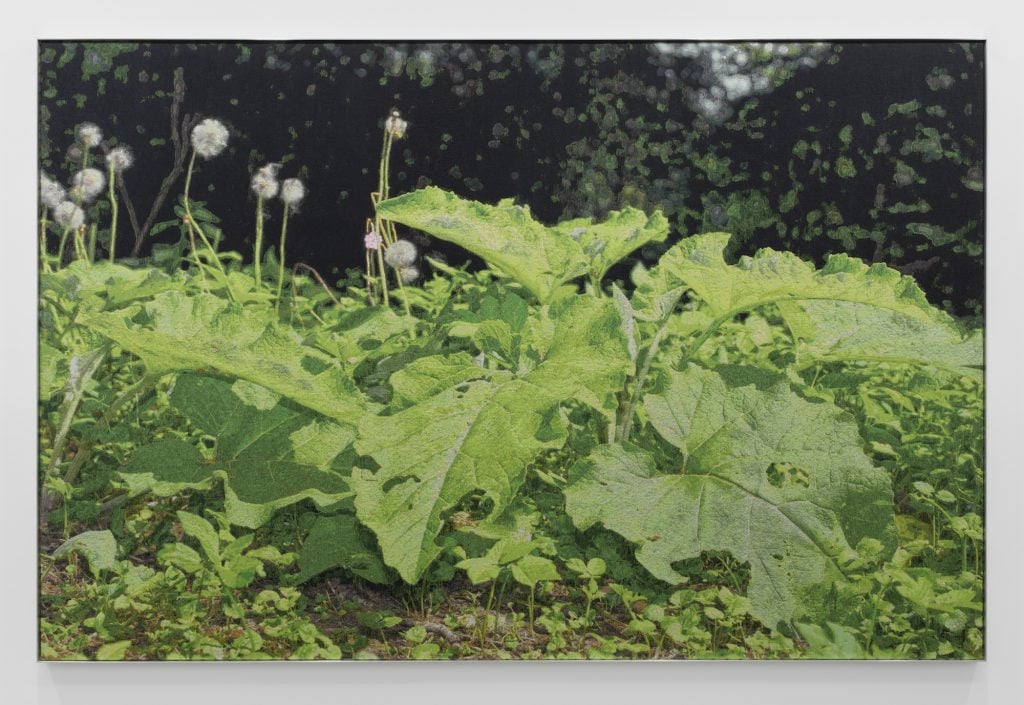
David Hartt, The Garden (2023). ©David Hartt. Image courtesy the artist and David Nolan Gallery.
A gallery’s sales at Basel can amount to a significant percentage of its annual revenue. It’s rare “to have someone drop out and create a space,” said dealer Lucy Mitchell-Innes, who served on the selection committees for Art Basel and Art Basel Miami Beach for a decade each. She pointed out that “there are people and galleries who have been going there for 45 years.”
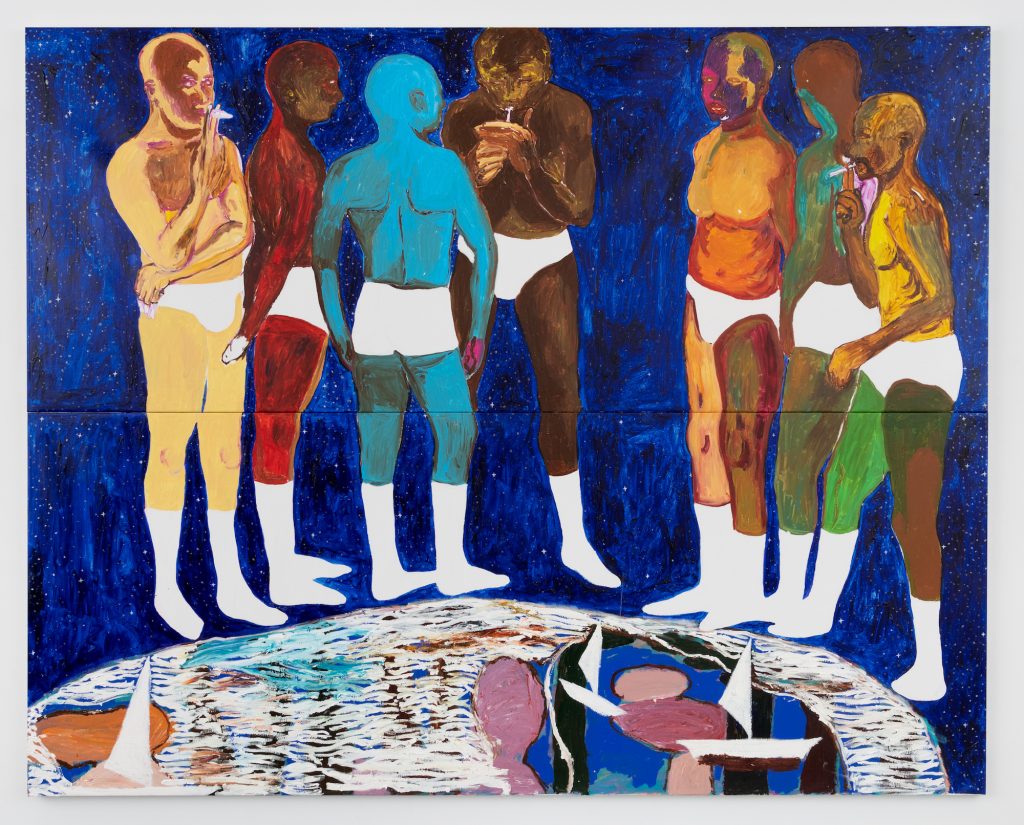
Gideon Appah, Sons (2020) at Mitchell-Innes and Nash’s 2024 Art Basel booth. Image courtesy the artist and Mitchell-Innes and Nash.
Each Basel fair (Hong Kong, Basel, Paris, and Miami Beach) has its own selection committee with six to eight members, all dealers. There are eight on the Swiss fair’s committee, and fair organizers have said that they aim for geographic diversity and expertise in various genres of art, to inform the process.
So, if even veteran dealers approach the application process with some trepidation, what is an aspiring young dealer to do?
“Persevere!” dealer Marianne Boesky said. “Believe in the artists you represent and keep applying until you get in.” Also, she advised, “Try to meet all the committee members along the way. Having a face to a name is always helpful.”
As for Boesky’s own approach, she said, “I treat each application as if it is make or break—because there is no resting on laurels when it comes to getting in to Art Basel.”

David Hammons, Untitled, circa 1990. Image courtesy the artist and Lévy Gorvy Dayan
“What it takes to get in today is to have a substantial program, an interesting discourse, and be actively engaged in the practice of being a gallery,” Lévy said, when asked for her advice for Basel hopefuls. “I don’t think you can get in Basel if you have a gallery on the fifth floor, you don’t do exhibitions, and you’re just an art dealer. I think for them it has to be for the greater good, for the good of the collectors, of the galleries, of the artist, but also the good of the public.”
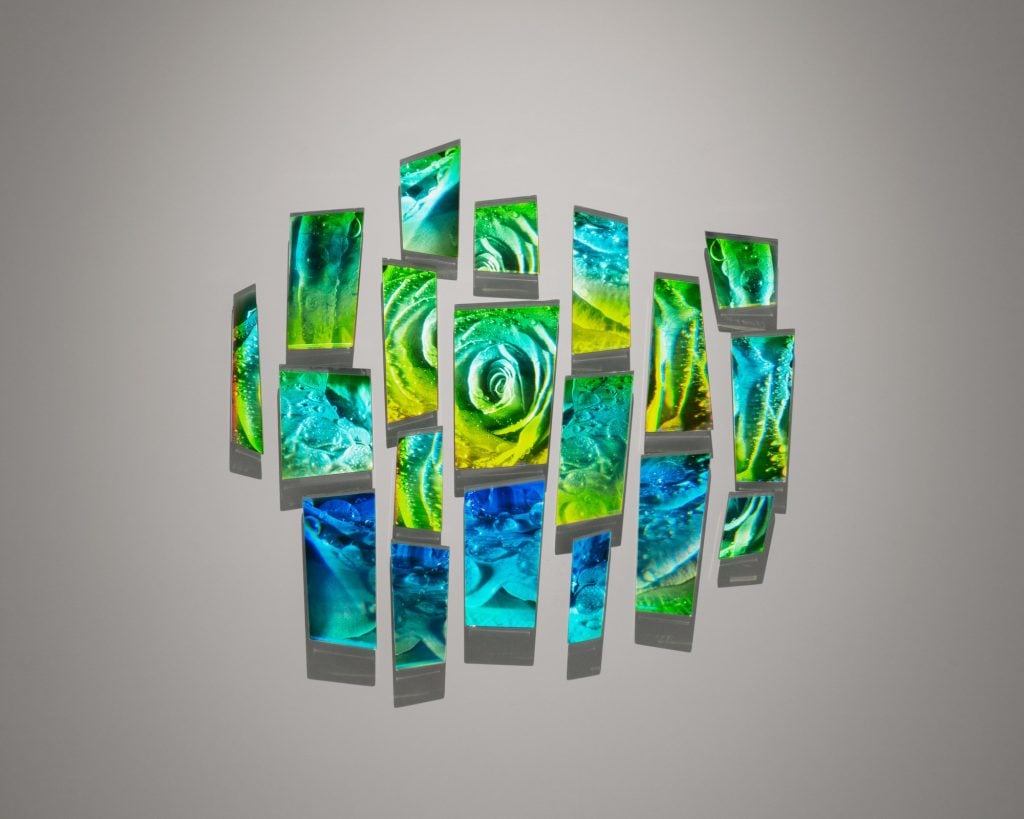
Sarah Meyohas, Interference #21 (2024) at Marianne Boesky’s Art Basel booth. Image courtesy the artist and Marianne Boesky Gallery.
Many younger dealers target the fair’s Statements sector, which is reserved for solo displays by emerging artists, as a more accessible entry point, especially since the per-square-foot price of participation is lower than in the Galleries sector.
The cutting-edge–focused Liste Art Fair in Basel was also cited by many as a “feeder” event of sorts, where younger galleries can cut their teeth before aiming for the marquee show.
“We started trying to cultivate and generate a presence in Basel prior to the first inclusion with the Liste fair,” Fuentes said. After participating there, his gallery was accepted into Statements.
“It was really a goal for me with the first 10 years of the gallery to both become a member of the Art Dealers Association and to hopefully do Art Basel,” he added. He pulled it off.
“For first-time applicants and emerging galleries, bold presentations and solo or two-person booths will stand out,” art advisor Amanda Schmitt said. “Furthermore, a fair will want to see that the gallery has a relationship with the artist whose work they’re presenting, as opposed to a gallery that might be exhibiting secondary market work, although we see that happening more and more with more established and blue-chip galleries.”
Schmitt also had this intriguing insight: “The application itself is in many ways a formality. The decisions are made throughout the year, responding to the quality of the galleries’ program and their artist roster, and above all, the quality of the artwork they are applying to the fair with.” In other words, galleries must be on their A-games at all times, because the committee is paying attention.
It’s important “to have respect from your peers as well as understanding who is on the committee and make sure they are aware of what you stand for,” dealer David Nolan said.
In addition to “a rigorous exhibition program that’s also got a unifying perspective,” it should be “a gallery with a new twist in that, not just copying other galleries but coming with a new fresh input,” he said.
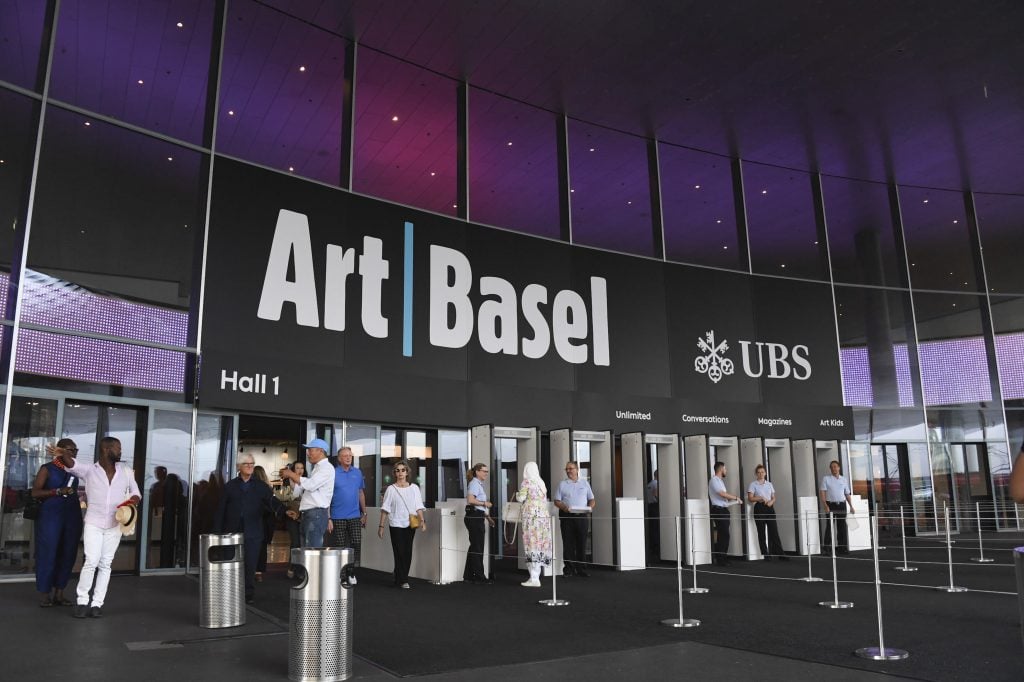
Art Basel 2023 at Messe Basel on June 14, 2023 in Basel, Switzerland. Photo by David M. Benett/Jed Cullen/Dave Benett/Getty Images.
Galerie Lelong’s vice president, Mary Sabbatino, a longtime selection committee member for Miami Basel, called the selection process “extremely thorough and rigorous in terms of how all sides are looked at. I always felt that if applicants could see how seriously each member of the committee looks at each application and gives such thorough review and discussion, and tries to open the door for new colleagues as much as we can, that people would feel much more comfortable.”
Selection committee members receive no pay, and there are extensive travel and participation requirements. What do they get out of it? “If you read 700 applications,” Mitchell-Innes said, “you have a very good idea of what’s going on globally” with the art world. “It’s extremely intense and hard, but you learn a tremendous amount.”
The rules enforced by those selection committee members have changed a bit over the years, to help dealers who are earlier in their careers. Since the pandemic, the fair adjusted its eligibility criteria for exhibitors, nixing rules about being in business for a certain number of years or having a dedicated physical space.
And to return to Boesky’s point about perseverance, while the committee for one Basel fair may reject an application from a dealer, the committee for another Basel may give the green light to that same person.
Dealer Larkin Erdmann, who is based in Cham, Switzerland, applied to Art Basel Paris with what he described as “a stellar duo exhibition with Duchamp and Man Ray.”
“I really thought we would get in as the proposition was of very high quality and we are in the year of the 100th anniversary of the Surrealist Manifesto,” Erdmann said. “So to me, a focus on the friendship of Duchamp and Man Ray made total sense, but the competition is very strong for the Paris fair as well, so we got waitlisted.”
Erdmann has done Art Basel Miami Beach and Frieze Masters in London, and he said he is playing the long game. “There is no way to rush these things,” he said. “The selection committees and the fair directors are very aware of what is going on worldwide in the galleries and you will eventually make it if you do a good job and work hard.”
This year, his gallery is showing at Art Basel for the first time, with a solo presentation of work by the 20th-century Italian artist Antonio Calderara. How did it feel to be accepted into Basel? “It’s a big honor, because as a Swiss gallery focused on the historic artists, this is a very important place to exhibit,” he said. “We are proud to be Swiss and so to exhibit at the best fair in the world in Switzerland is a fantastic achievement.”